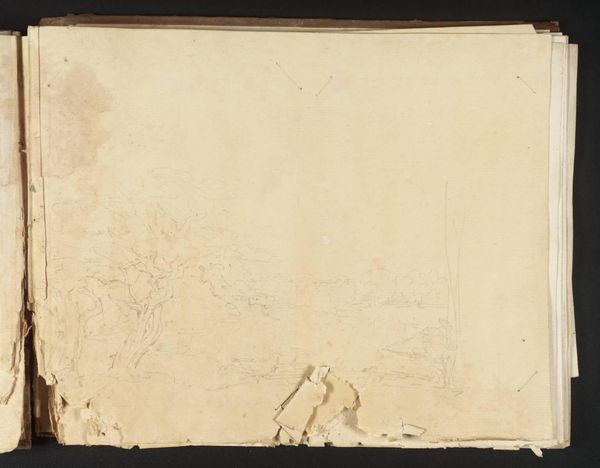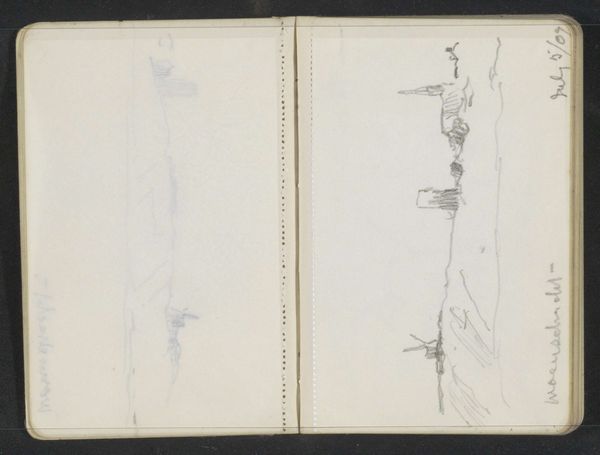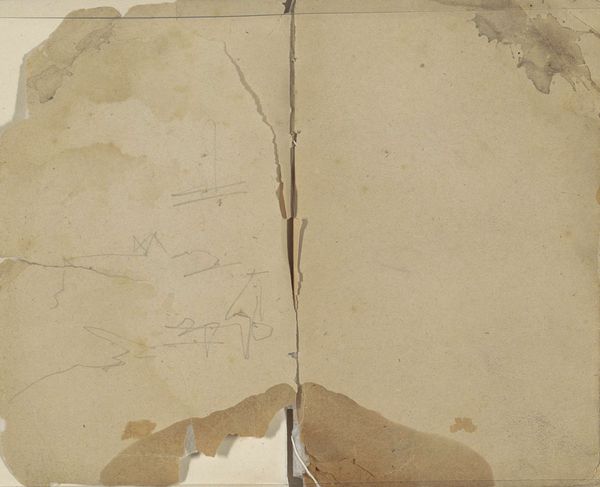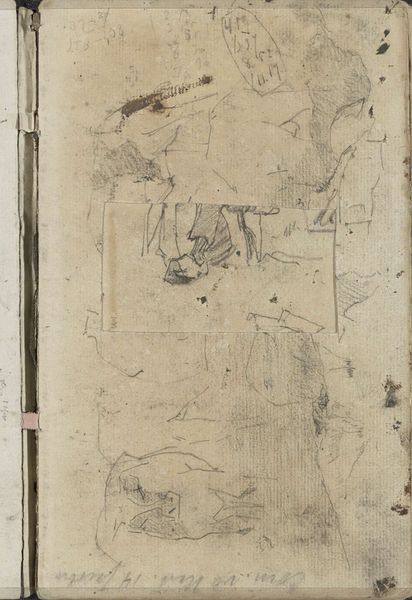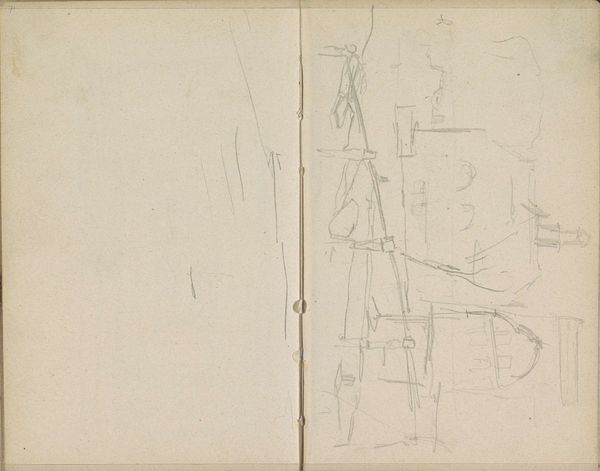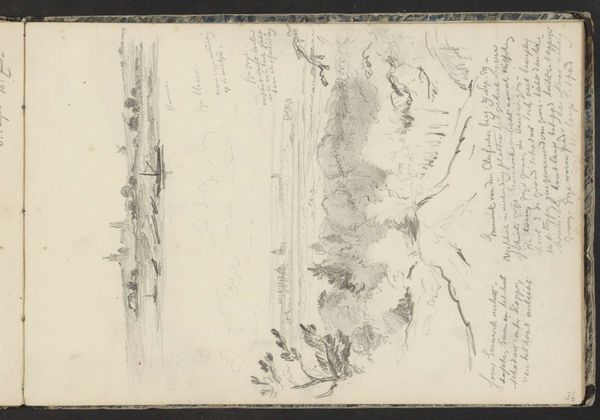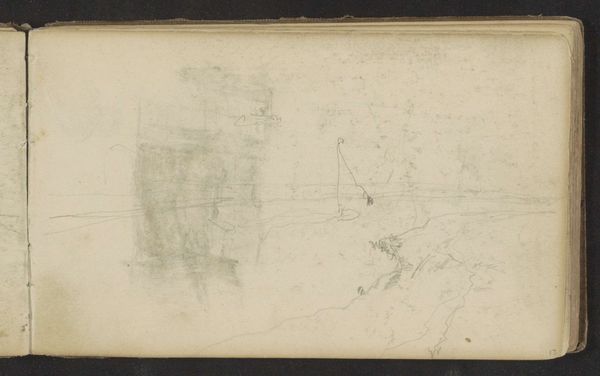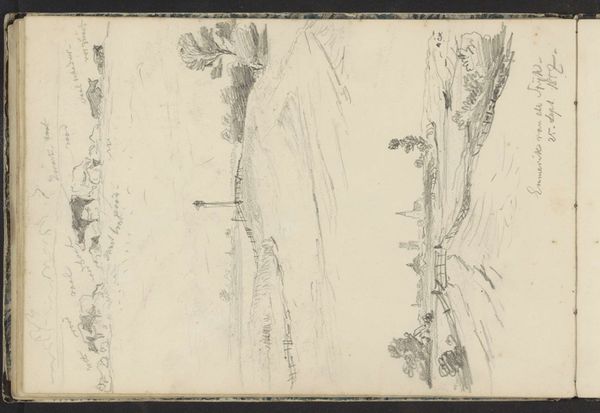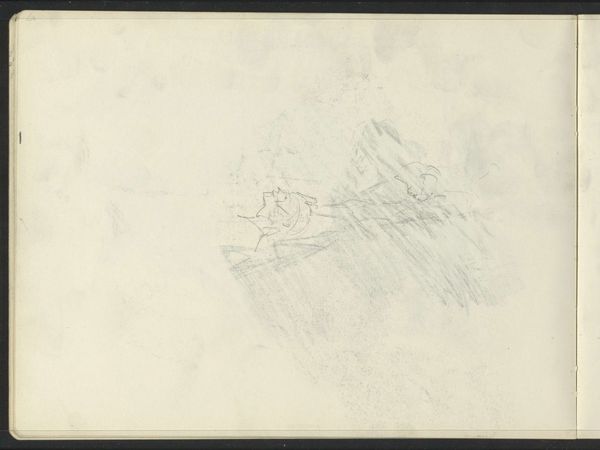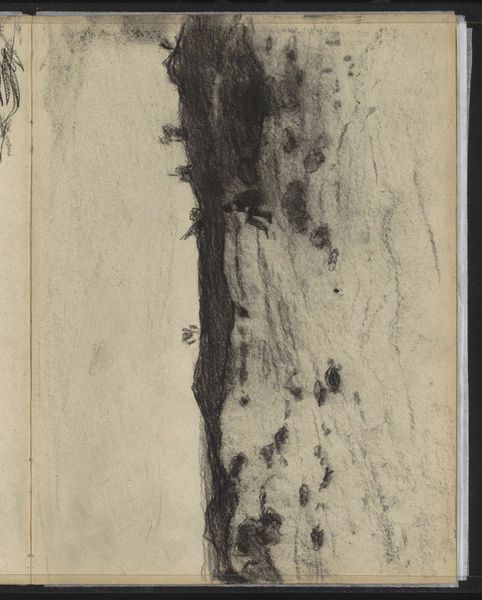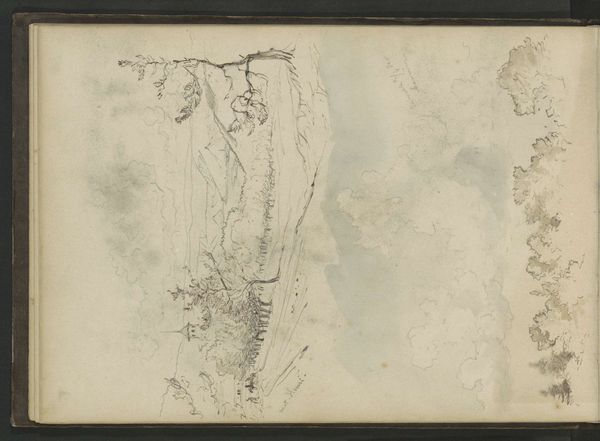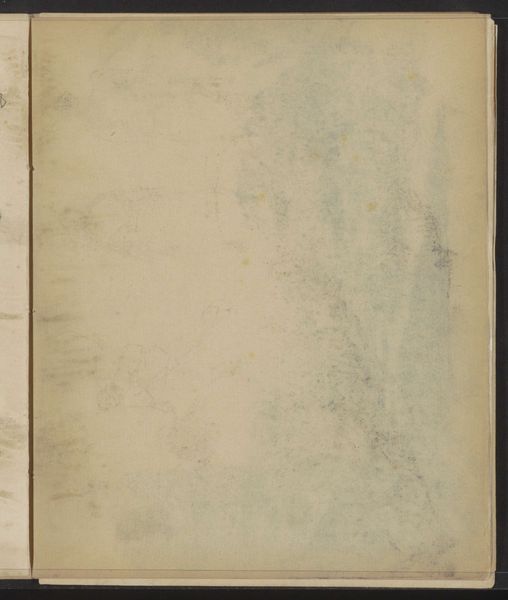
Copyright: Rijks Museum: Open Domain
Curator: Before us we have "Waterval," a work on paper attributed to Johannes Tavenraat, possibly dating from 1858 to 1859. It's rendered in pencil, ink and watercolor and is an evocative example of the Romantic landscape tradition. Editor: Evocative is certainly one word for it. My initial impression is…fragmentary. There’s a sense of something unfinished, almost fleeting, like a memory sketched rather than a scene captured. What strikes you first about the composition? Curator: The stark division offered by the sketchbook's central fold, bisecting the artistic process itself—revealing a dialogue between intent and execution. Tavenraat uses readily available materials; the labor involved is immediate and evident, placing him within a continuum of artisanal practice rooted in the accessibility of art making. Editor: Interesting perspective! To me, the fold creates a contrasting spatial effect. The blank page almost acts as a void against which the depicted waterfall gains dramatic presence. The tonal gradations of the ink and watercolor, especially the blacks and grays, produce a wonderful chiaroscuro. Note how he uses line, mass, and value to establish a sense of depth in a relatively limited pictorial space. Curator: And beyond purely aesthetic judgments, how do these very formal devices translate to a social or political reading? Do we consider how this "waterfall," presumably observed in situ, speaks to resource allocation and the socio-economic value attached to depictions of nature in a period of growing industrialization? It certainly forces a commentary about labor and observation that is impossible to disentangle here. Editor: While acknowledging your focus on social underpinnings, might we not consider the artist's emotional experience? The Romantic sensibility so evident in the work isn’t purely a matter of socioeconomic positioning but individual expressiveness—conveyed by the quick, dynamic linework. This speaks more about sublime encounter than class. The incomplete quality seems to emphasize the limits of human capture! Curator: Perhaps. Still, the mode of representation has specific class and cultural implications, reflecting evolving values surrounding nature. We’re discussing, fundamentally, differing views about who had the right to portray nature. Editor: A fascinating point, underscoring art's embeddedness within socio-historical contexts, even as we acknowledge its undeniable aesthetic qualities. Curator: Precisely, it's this negotiation between subjective experience, its formal expression, and wider material reality that interests me.
Comments
No comments
Be the first to comment and join the conversation on the ultimate creative platform.
